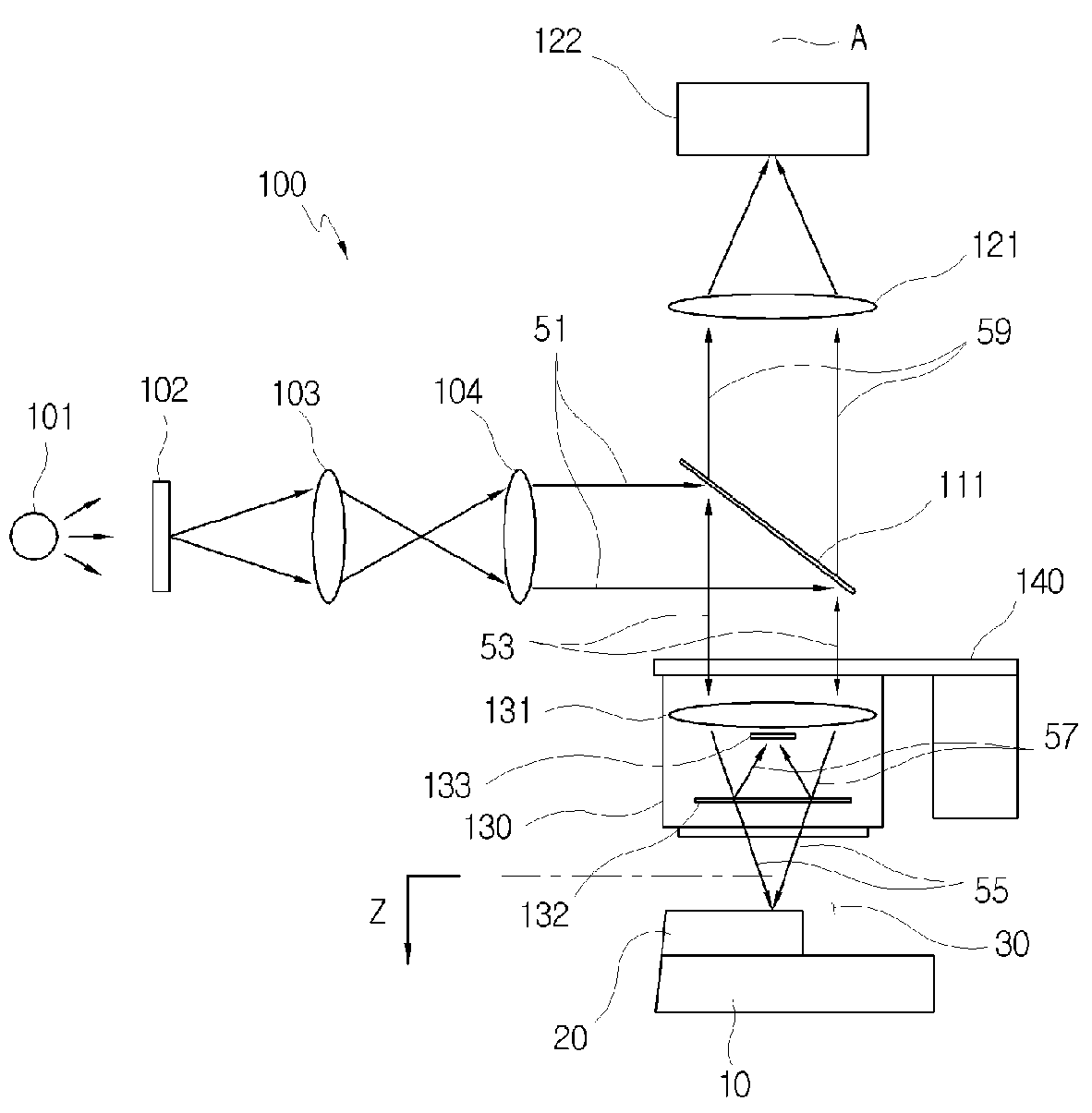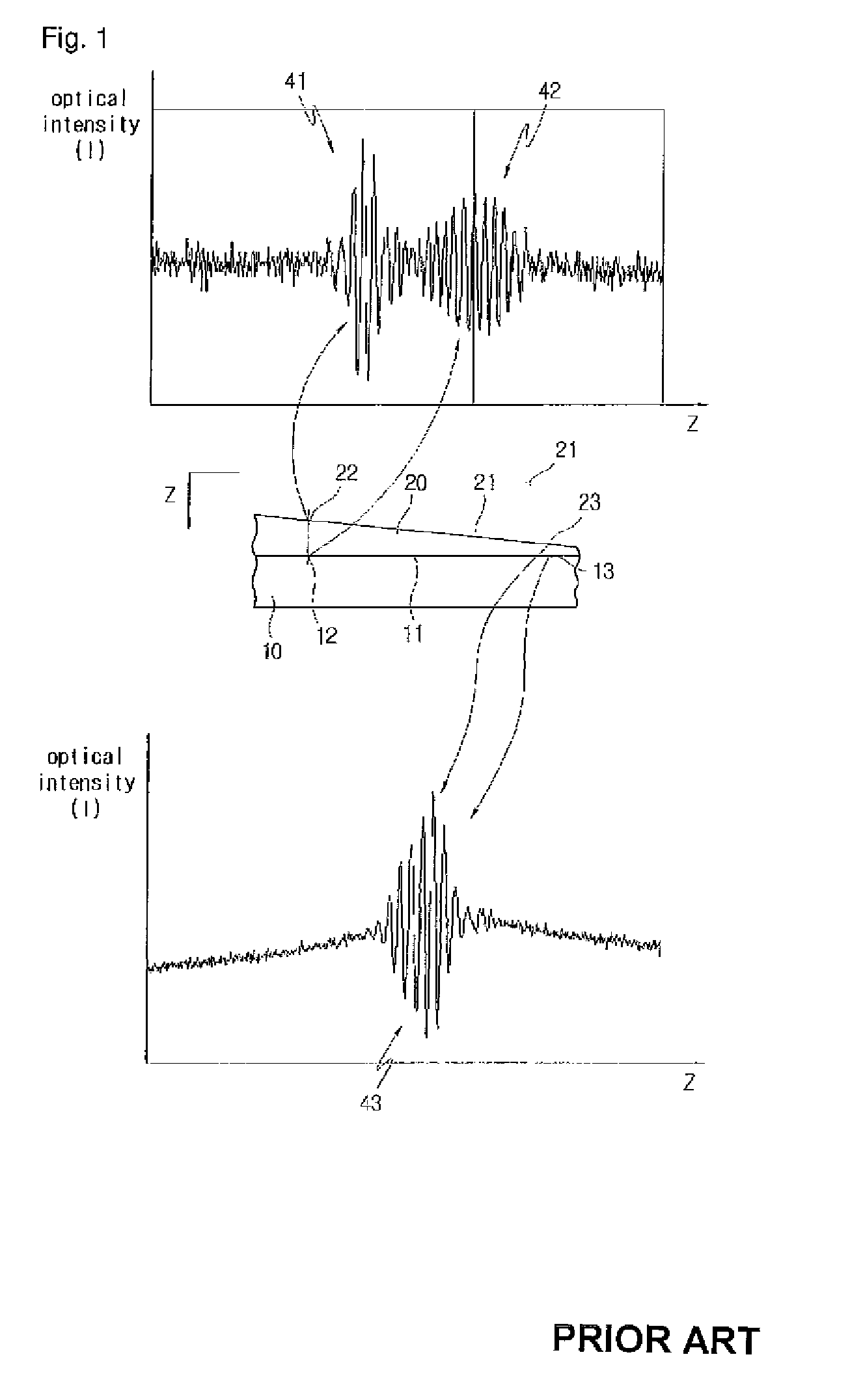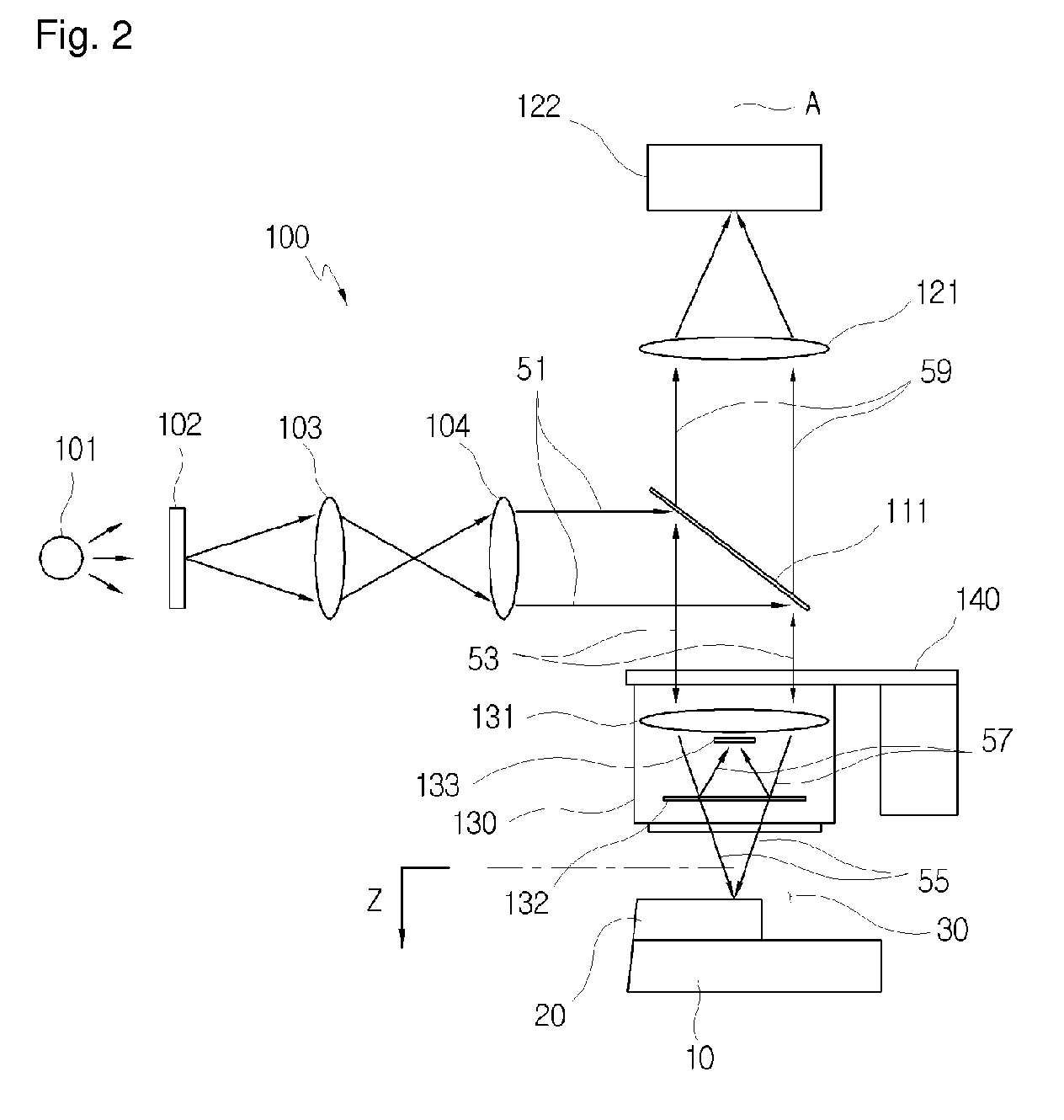Method for measuring thickness
a technology of thickness measurement and thickness, applied in the direction of measuring devices, instruments, using optical means, etc., can solve the problems of interference signals that cannot be used to a transparent subjecting layer b, and the thickness of the subjecting layer b>20/b> cannot be obtained, so as to achieve accurate measurement and reduce the process and time required for measuring thickness
- Summary
- Abstract
- Description
- Claims
- Application Information
AI Technical Summary
Benefits of technology
Problems solved by technology
Method used
Image
Examples
Embodiment Construction
[0029]Hereinafter, embodiments of a method for measuring a thickness according to the present invention will be described in detail with reference to the following drawings.
[0030]FIG. 2 is a view illustrating an interferometer used for implementing a method for measuring a thickness according to the present invention.
[0031]With reference to FIG. 2, the interferometer 100 employs the structure of a mirau interferometer which is typically used for measuring a thickness of a transparent thin layer. The interferometer 100 includes a white optical source 101. A lamp having various kinds of sources, such as a halogen lamp, may be used as the white optical source 101. In order to reduce only brightness of incident light from the white optical source 101 while maintaining the characteristic of a spectrum thereof, an ND filter (Neutral Density filter) is used. The interferometer 100 includes a condenser lens 103 for condensing light passed through the ND filter 102. Light passed through the ...
PUM
 Login to View More
Login to View More Abstract
Description
Claims
Application Information
 Login to View More
Login to View More - R&D
- Intellectual Property
- Life Sciences
- Materials
- Tech Scout
- Unparalleled Data Quality
- Higher Quality Content
- 60% Fewer Hallucinations
Browse by: Latest US Patents, China's latest patents, Technical Efficacy Thesaurus, Application Domain, Technology Topic, Popular Technical Reports.
© 2025 PatSnap. All rights reserved.Legal|Privacy policy|Modern Slavery Act Transparency Statement|Sitemap|About US| Contact US: help@patsnap.com



